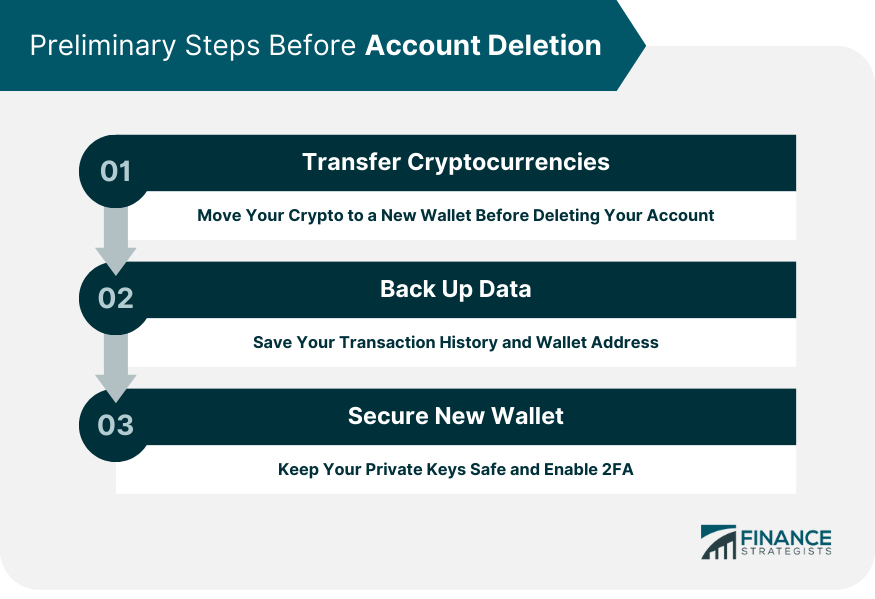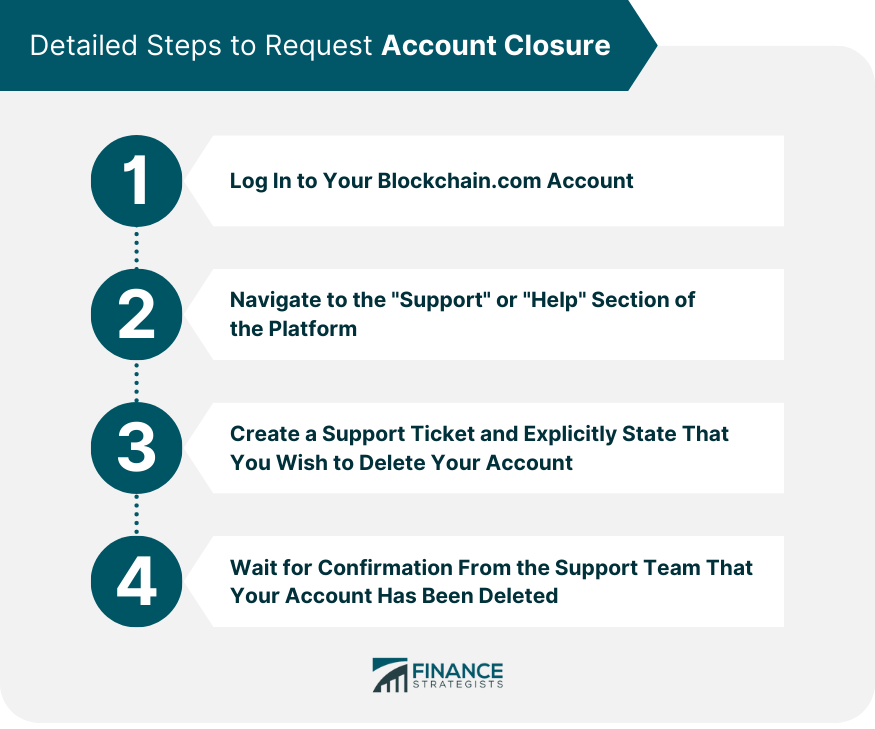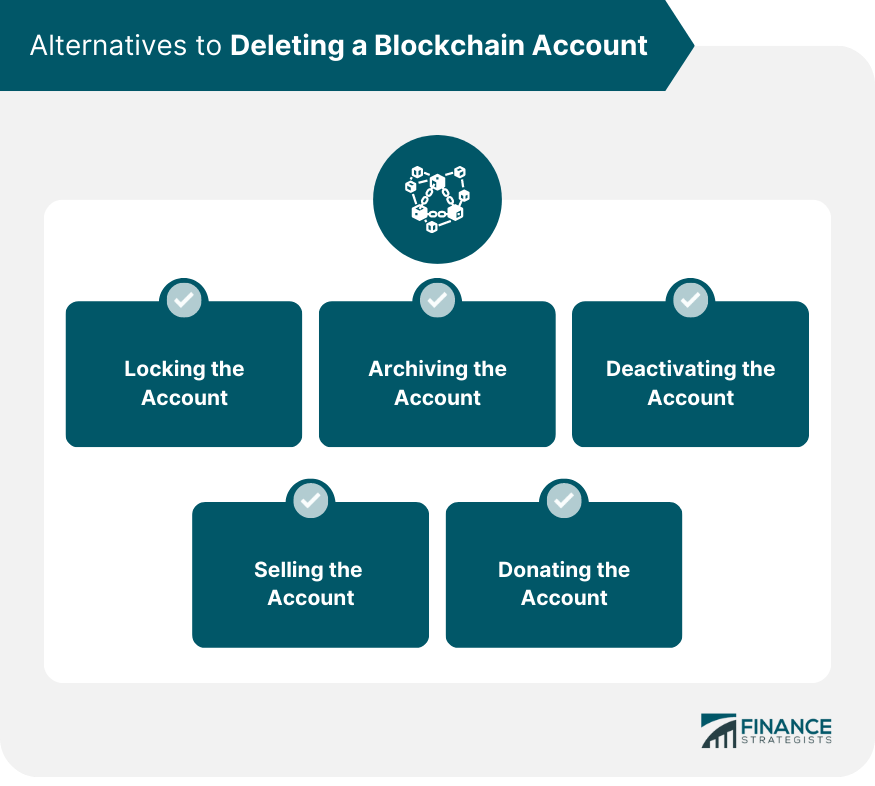A blockchain account, or a wallet, is a digital tool used to manage cryptocurrencies like Bitcoin and Ethereum. Unlike traditional bank accounts, blockchain accounts are decentralized and rely on encryption for secure transactions and currency creation. Blockchain technology, comprising data blocks linked through cryptography, is the bedrock of cryptocurrencies. Each block holds a timestamp, transaction data, and a cryptographic hash of the previous block, forming a chain. This technology's distinctive features, such as decentralization, transparency, and immutability, have broadened its use beyond finance into sectors like supply chain, healthcare, real estate, and voting systems. Here, it improves security, transparency, and efficiency. However, security and privacy in blockchain transactions are user-dependent. They ensure that only intended parties can access data. The importance of safety is underscored by the irreversibility of losses - if cryptographic keys to blockchain accounts are lost or stolen, the associated cryptocurrency becomes permanently inaccessible. Blockchain accounts, or wallets, function as personal ledgers for cryptocurrency transactions. They consist of two main elements: a public address and a private key. The public address, akin to an account number, is what other people use to send cryptocurrency to your account. The private key, on the other hand, is a digital signature that validates and approves transactions. It's akin to a digital signature and must be kept private and secure. A unique and fundamental characteristic of blockchain is its immutability. Once a block of data has been added to the blockchain, it is virtually impossible to alter or delete. This feature is due to the cryptographic hashes linking the blocks together, ensuring data integrity and security. Any change to a block would result in a different hash, breaking the chain and rendering the blockchain invalid. With this understanding, it becomes apparent that "deleting" a blockchain account isn't straightforward. In theory, it's impossible to erase an account from the blockchain because of its immutability. However, in practice, what is referred to as account deletion usually means losing access to the account. For instance, this could occur if you lose your private key and have no backup, effectively locking you out of your account forever. Should you wish to lose access to your blockchain account deliberately, or in other words, "delete" your account, there are several steps you need to undertake to safeguard your assets and data. Before losing access to your current wallet, you should transfer your cryptocurrencies to a new wallet. This process typically involves setting up a new wallet and using the public address of the new wallet to transfer the funds. It's essential to ensure the correct public address is used to avoid irreversible losses. Before you delete your account, ensure you have backed up all critical data. This might include transaction records, the public address of the wallet, and any other necessary data you might need in the future. These backups can help you keep track of your transaction history and might be necessary for taxation and regulatory compliance. After backing up your data and transferring your assets, it's crucial to secure your new wallet. This process might involve securing your private key, possibly by writing it down and storing it in a safe place, and enabling additional security features such as two-factor authentication. Moreover, it's recommended to frequently update your wallet software to benefit from the latest security updates. To "delete" your blockchain wallet account, you must contact the support team of the platform you're using, such as Blockchain.com. Most platforms do not allow users to delete their accounts by themselves due to security and regulatory reasons. It's crucial to keep in mind that this process generally results in losing access to the wallet rather than erasing the wallet from the blockchain. Therefore, before reaching out to support, ensure that you've transferred your assets and backed up necessary data, as previously detailed. Here are general steps to follow when requesting a blockchain wallet account closure: Log in to Your Account: You need to be logged in to contact support and initiate the account deletion process. Navigate to the Support Page: Look for the "Support" or "Help" section of the platform. This is typically located in the footer of the website or in the dropdown menu of your account. Create a Support Ticket: Most platforms will have you create a support ticket for account deletion requests. This usually involves filling out a form detailing your request. Remember to explicitly state that you wish to delete your account. Wait for Confirmation: The support team will review your request and typically confirm via email that your account has been "deleted", i.e., access to it has been revoked. Account closure should not be taken lightly due to its irreversible nature. Once you have lost access to your account, there's typically no way to regain it. This underscores the importance of transferring your assets and backing up your data before initiating the deletion process. Also, be aware that details of past transactions linked to your public address will remain visible on the blockchain. This is due to the immutable nature of blockchain records. As such, account closure does not erase your transaction history. As emphasized throughout this article, account "deletion" is essentially losing access to the account, and it's irreversible. Once you've confirmed the closure with the platform's support team, there's usually no going back. You can't regain access or recover any assets left in the wallet. This is why it's vital to be certain before going through with the process. Any digital assets remaining in your wallet after account closure will become inaccessible. The assets aren't technically deleted from the blockchain—they are still there, linked with your public address. However, without your private key, you can't control or access these assets. It's as if they're locked in a safe, and the key has been thrown away. Losing access to your account also means losing access to your transaction history and any information associated with the account. This could pose challenges if you need this information for purposes like tax filing or tracking past transactions. Moreover, it could lead to potential legal implications if required by a legal authority. Given the irreversible nature and potential downsides of account deletion, you may want to consider alternatives. This will prevent anyone from accessing the account, but the data will still be stored on the blockchain. This is a good option if you want to keep your account for future use but you don't want to use it right now. This will move the account to an archive, where it will no longer be visible on the blockchain. However, the data will still be stored on the blockchain. This is a good option if you want to keep your account's history but you don't want to use it anymore. This will disable the account, but the data will still be stored on the blockchain. This is a good option if you want to prevent anyone from accessing the account but you don't want to delete the data. This is a good option if you want to get rid of your account but you still want to get some value out of it. You can sell your account to someone else who wants to use it. This is a good option if you want to give your account to someone else who can use it. You can donate your account to a charity or a non-profit organization. Deleting a blockchain account is a consequential and irreversible process that necessitates careful consideration. To delete an account, you need to transfer your digital assets, back up your important data, contact your platform's support team, and follow their instructions to lose access to your account. Remember, this process doesn't erase your account from the blockchain but merely locks you out of it, making any remaining assets inaccessible. The irreversible nature of blockchain operations, including account deletion, highlights the importance of safety and security. Losing your private key or forgetting encryption passwords can lead to permanent loss of access to your digital assets. Therefore, maintaining the security of your account and keys is paramount. As blockchain technology continues to evolve, it's essential to keep learning and staying updated. With the proper knowledge and precautions, you can safely navigate the world of cryptocurrencies and blockchain technology.Overview of Blockchain Account
Understanding the Nature of Blockchain Accounts
Explanation of How Blockchain Accounts Work
Details on the Immutability of Blockchain
Highlighting the Issue: Can a Blockchain Account Truly Be Deleted?
Preliminary Steps Before Account Deletion
Transferring Your Cryptocurrencies to Another Wallet
Backing Up Important Data
Ensuring the Security of the New Wallet

How to Delete a Blockchain Wallet Account
Explanation of How to Contact Blockchain.com Support for Account Deletion
Detailed Steps to Request Account Closure

Cautionary Notes Regarding Account Closure
Implications of Deleting a Blockchain Account
Discussing the Irreversible Nature of Deleting an Account
Effect on Your Digital Assets
Consequences of Losing Access to Your Account
Alternatives to Deleting a Blockchain Account
Locking the Account
Archiving the Account
Deactivating the Account
Selling the Account
Donating the Account

The Bottom Line
How to Delete a Blockchain Account FAQs
Deleting a blockchain account typically refers to losing access to the account, not erasing it from the blockchain. Once access is lost, it's impossible to regain it, and any remaining assets become inaccessible.
No, most platforms require you to contact their support team to delete your account. This is due to security and regulatory considerations.
If you've transferred your digital assets to a new wallet before account deletion, your assets will be safe. However, any assets remaining in the account after deletion will become inaccessible.
You can lock, archive, deactivate, sell, and donate the blockchain account. The best option for you will depend on your individual needs and circumstances.
No, once you lose access to a blockchain account, the process is irreversible. It's impossible to regain access, which underscores the importance of careful consideration before account deletion.
True Tamplin is a published author, public speaker, CEO of UpDigital, and founder of Finance Strategists.
True is a Certified Educator in Personal Finance (CEPF®), author of The Handy Financial Ratios Guide, a member of the Society for Advancing Business Editing and Writing, contributes to his financial education site, Finance Strategists, and has spoken to various financial communities such as the CFA Institute, as well as university students like his Alma mater, Biola University, where he received a bachelor of science in business and data analytics.
To learn more about True, visit his personal website or view his author profiles on Amazon, Nasdaq and Forbes.











